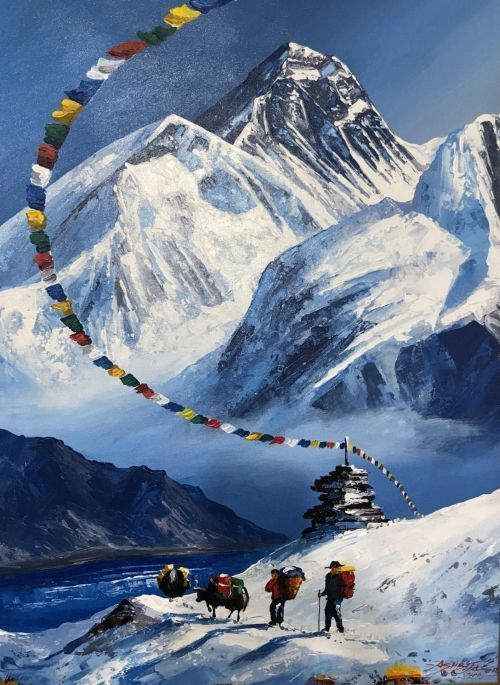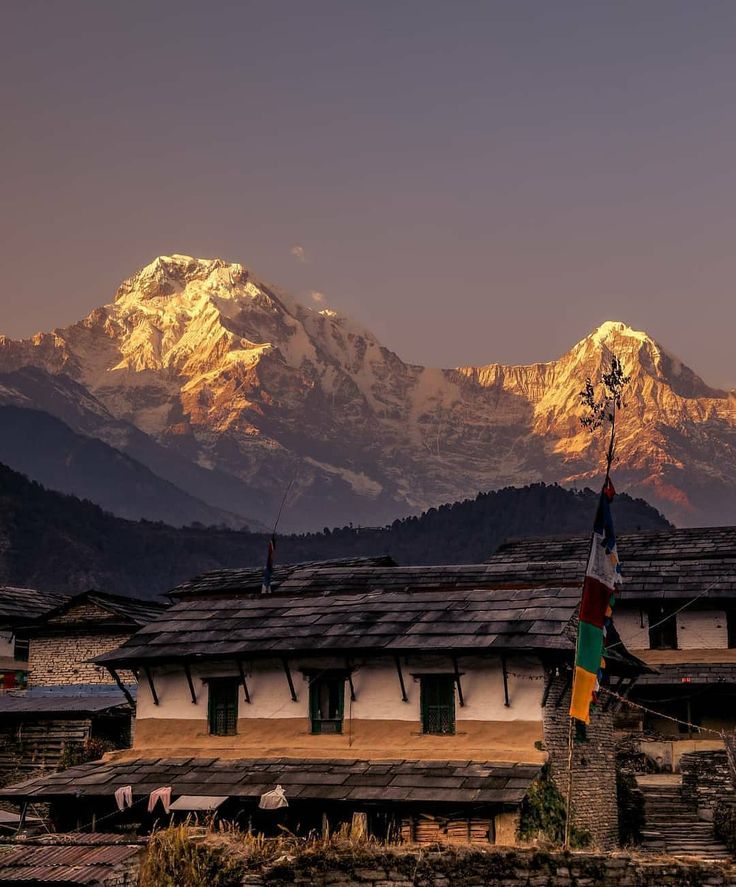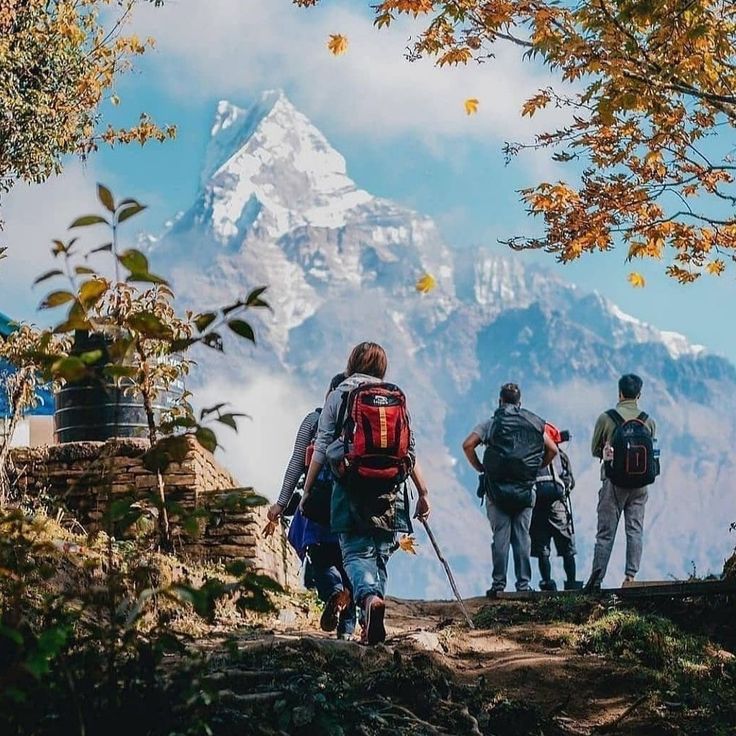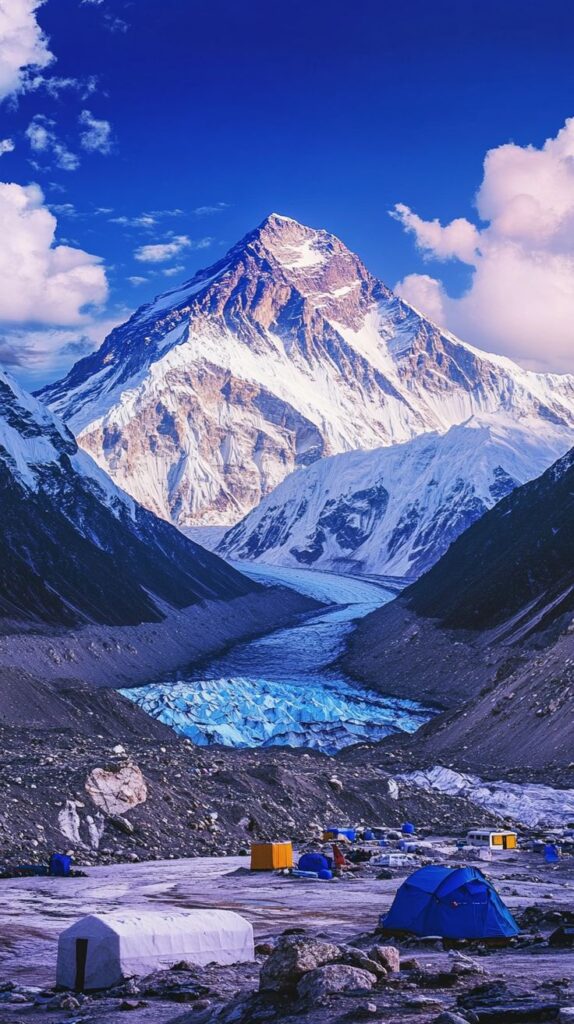The Annapurna Circuit Short Trek is one of Nepal’s most well-known and well-traveled hiking routes. This condensed version of the famous Annapurna Circuit trek, which usually takes about 12-21 days to complete, offers trekkers the essence of the Annapurna region without the time commitment and extreme physical demands of the full trek. With a timeframe ranging from 7 to 10 days, the Annapurna Circuit Short Trek offers a perfect balance of adventure, culture, and relaxation.

If you’re wondering whether this trek is right for you, the answer is likely yes. Regardless of your level of experience or desire to see the Himalayas, this expedition is sure to provide you with memories that will last a lifetime. Let’s explore five powerful reasons why the Annapurna Circuit Short Trek will amaze you and why it should be on your bucket list.
Table of Contents
1. Stunning Himalayan Views with Minimal Effort
One of the primary draws of the Annapurna Circuit Short Trek is the stunning vistas of the Annapurna Massif, which is home to some of the most well-known mountains in the world.From the very start of your trek, you’ll be greeted with incredible vistas that include Mount Annapurna, Machapuchare (also known as Fishtail Mountain), Dhaulagiri, and Himalchuli, to name just a few. Even from the trek’s lowland sections, one can see these peaks, which are among the highest in the world.
As you journey through lush subtropical forests and terraced fields, you’ll find that the trek’s gentle ascent allows you to gradually acclimatize to higher altitudes. The Annapurna region weather plays an important role in this trek, offering clear skies and excellent visibility during peak seasons, particularly in spring (March-May) and autumn (September-November). These seasons are ideal for trekking, as the weather is more stable, and the snow-capped peaks of the Annapurna range create the perfect backdrop for every step of your journey.
When you reach higher altitudes, around Manang and Thorung La Pass, the views become even more dramatic. The sheer magnificence of the Annapurna peaks towering above you is awe-inspiring. One of the highlights of the Annapurna Circuit Short Trek is that you can experience these stunning views without the prolonged physical challenge of the longer trek. It’s a perfect way to enjoy the majesty of the Himalayas at a more relaxed pace.
To enhance your trekking experience, be sure to consult a well-detailed Annapurna region map, which highlights all the key destinations along the trek. With a map, you’ll have a better understanding of the altitude changes, key stops, and trail routes, ensuring you don’t miss any of the breathtaking viewpoints.
2. Cultural Immersion in Remote Villages

One of the most enriching aspects of the Annapurna Circuit Short Trek is the chance to immerse yourself in the diverse cultures of the region. As you trek through remote villages, you’ll encounter locals from a variety of ethnic backgrounds, including the Gurung, Tamang, Thakali, and Sherpa people, among others. These communities have maintained their traditional lifestyles, and trekking through their villages gives you a rare opportunity to experience their daily lives.
The walk through the Annapurna region is as much a cultural as a physical experience. On the hike, you pass past quaint settlements like Manang, Chame, and Besisahar. Each village has its own unique character and charm, and you’ll find traditional stone houses, prayer flags fluttering in the wind, and Buddhist stupas that have stood for centuries. Visiting these villages allows you to witness the spiritual practices and rituals of the locals, with Buddhist prayer wheels and ancient monasteries dotting the landscape.
In Manang, you can visit the Buddhist monasteries, where you may have the opportunity to interact with monks and learn about the local religious practices. The Tibetan culture is very much alive in these regions, and you’ll see beautiful prayer flags, sacred shrines, and colorful Buddhist art in the monasteries. These authentic cultural experiences are a significant part of the Annapurna region trekking experience.
Another cultural highlight is the food. Tibetan and Nepali cuisines coexist in the Annapurna region. You’ll find traditional dishes like momo (dumplings), dal bhat (lentil soup served with rice), thukpa (noodle soup), and Tibetan bread. The food is not only delicious but also provides the energy needed for long days of trekking.
While trekking, it’s also recommended to have a Annapurna trekking map handy, as it will highlight the key cultural landmarks and important villages you will pass through, helping you make the most of your cultural immersion.
3. Access to Unique Flora and Fauna
The Annapurna Circuit Short Trek passes through diverse ecosystems, offering trekkers the chance to explore a variety of flora and fauna along the way. The trail transitions from lush rhododendron forests and oak trees at lower altitudes to alpine meadows and snow-covered landscapes higher up. Each zone of the trek is home to unique plant species, including wildflowers, herbs, and towering pine trees.
In addition to the rich vegetation, the trek provides excellent opportunities for spotting wildlife. The Annapurna region is home to a range of animals, some of which are rarely seen. Among the more commonly spotted animals are the Himalayan tahr, musk deer, and the wild boar. If you’re lucky, you might even spot the elusive snow leopard or Himalayan black bear, although these creatures are quite rare.
Birdwatchers will also find the Annapurna Circuit Short Trek to be a treat, as the region is home to a variety of bird species, including the Danphe (Himalayan monal), which is Nepal’s national bird. You’ll also have the chance to see eagles, vultures, and other raptors soaring above the mountains.
The diversity of ecosystems makes the Annapurna region trek an unforgettable experience for nature lovers. The Annapurna region weather plays a significant role in this biodiversity, with the varying climates at different altitudes allowing for a wide range of flora and fauna to thrive. With the help of an Annapurna trekking map, you can identify the different ecosystems you’ll pass through and better understand the local wildlife and plants.
4. Perfect for All Skill Levels

Trekkers of all skill levels will love the Annapurna Circuit Short Trek. Unlike the full Annapurna Circuit trek, which involves long, strenuous days and high altitudes, the shorter version is designed to provide a similar experience in a shorter timeframe and with less strenuous climbs. The trek’s gradual ascent makes it ideal for beginners and moderately fit individuals who want to experience the Annapurna region without the challenge of the full circuit.
While the trek does involve some steep climbs, particularly on the approach to Thorung La Pass, the shorter distance and the slower pace make it more accessible. The trek is suitable for those who want to enjoy the beauty of the Annapurna region without taking on a physically demanding challenge. This makes the Annapurna Circuit Short Trek a great option for families, solo travelers, and even first-time trekkers.
Another great choice for hikers seeking more extensive alternatives is the Annapurna Base Camp Trek. This trek leads you to the base camp of Mount Annapurna, one of the most popular treks in Nepal. However, the Annapurna Circuit Short Trek offers a less demanding alternative that still provides incredible views of the surrounding peaks, making it ideal for those looking for a taste of the Himalayas.
It’s always recommended to consult a reliable Annapurna circuit trek agency when planning your trip. These agencies can provide you with invaluable services, including local guides, porters, and advice on gear, which will ensure your trek goes smoothly and safely.
5. Less Crowded, More Tranquil

One of the great benefits of the Annapurna Circuit Short Trek is that it tends to be less crowded compared to the longer trek. While the full Annapurna circuit sees a significant number of trekkers during peak season, the shorter trek allows for a more peaceful experience, especially if you choose to travel during the off-season.
The peaceful atmosphere allows you to connect with nature in a way that is often lost in busier trekking routes. You can meditate beside a mountain stream, breathe in the crisp, clean air, and find time for reflection while trekking through tranquil forests. Many trekkers seek the serenity of the Himalayas, and this trek provides just that.
If you prefer to go on a quieter trek, the Annapurna round trekking route may also offer less crowded paths. Still, for those who want to avoid the hustle and bustle, the Annapurna Circuit Short Trek remains one of the most peaceful trekking experiences in Nepal.
Conclusion: Why You Should Choose the Annapurna Circuit Short Trek
The Annapurna Circuit Short Trek offers everything a trekker could want – breathtaking views, cultural immersion, access to wildlife, and a trek suitable for all fitness levels. Whether you’re looking to explore the majestic Himalayas without the challenge of the full circuit, immerse yourself in Nepali and Tibetan cultures, or experience the natural beauty of the Annapurna region, this trek delivers it all.
By carefully planning your trek and consulting a detailed Annapurna trekking map, you can ensure a safe and enjoyable journey. Remember that the Annapurna region weather plays an essential role in your trekking experience, so it’s important to trek during the ideal seasons to get the best weather conditions and views.For those ready to take on the adventure, the Annapurna Circuit Short Trek offers an unforgettable experience that will not only take your breath away but also inspire you with the beauty and serenity of the Annapurna region. It’s time to start planning your journey today!
What is the Annapurna Circuit Short Trek?
The trek typically takes between 7 to 10 days, depending on your pace and acclimatization. It covers a portion of the full Annapurna Circuit route, allowing trekkers to experience the highlights without the long duration.
How long does the Annapurna Circuit Short Trek take?
The trek typically takes between 7 to 10 days, depending on your pace and acclimatization. It covers a portion of the full **Annapurna Circuit** route, allowing trekkers to experience the highlights without the long duration.
What should I pack for the Annapurna Circuit Short Trek?
You should pack lightweight clothing, trekking boots, a good sleeping bag, a rain jacket, trekking poles, sun protection, and a first-aid kit. Don’t forget your camera to capture the incredible views!
How high is the highest point of the Annapurna Circuit Short Trek?
The highest point of the Annapurna Circuit Short Trek is Thorung La Pass, which is at an elevation of 5,416 meters (17,769 feet). It’s a challenging section, but the trek is designed to allow gradual acclimatization.
Is the Annapurna Circuit Short Trek safe?
Yes, the Annapurna Circuit Short Trek is safe, but like all high-altitude treks, there are risks, particularly related to altitude sickness. Trekking with an experienced guide, acclimatizing properly, and staying hydrated will help minimize risks.
